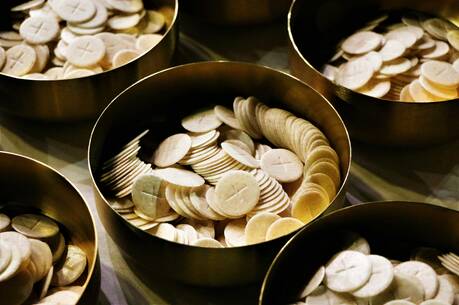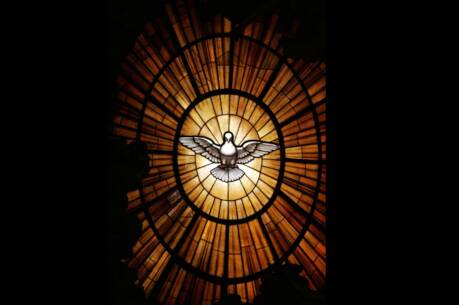Washed in the Blood
There are all kinds of detergents for which the claim is made that they can remove the most stubborn of stains. When those fail, home remedies abound. Everyone knows that once a stain is set, it is all the more difficult to get out. The sooner the treatment is applied, the better the chances the mark can be lifted. One of the hardest stains to remove is blood.
In today’s reading from the Book of Revelation, there appears the startling image of blood as a cleaning agent. The seer recounts a vision of the end time, when a huge multitude “from every nation, race, people and tongue” stands together before the throne of the victorious Lamb, bedecked in brilliant white robes. The seer is told that these are “the ones who have survived the time of great distress” and that their robes have been washed in the blood of the Lamb. The paradox of whiteness resulting from being washed in blood invites us to reflect more deeply on these powerful symbols.
At first we may think of the blood as Christ’s atoning, sacrificial blood, which removes the stain of our sin. But in Johannine literature, there are very few traces of atonement theology. The Lamb in the Gospel of John is the Passover lamb, whose bones are not broken (Ex 12:46, Jn 19:36) and whose blood, as in the Exodus, protects his people from the destroyer, and whose flesh fortifies his own for their journey to freedom. This is the one whose blood came forth from his pierced side, along with waters of rebirth (19:34), cleansing, renewing and opening the way to new life for all. Paradoxically, the Lamb is also the shepherd, whose sheep respond to the sound of his voice and from whose hands no one can snatch the sheep. In the Book of Revelation, the Lamb is now enthroned in glory, clothing everyone in the resplendent robe of his life and love.
The robes are brilliant white, the color of purity, victory and innocence. As Sir Isaac Newton showed, the color white combines all the visible colors of light in equal proportions. So too, in the vision of the end times in Revelation, people of every color and race are gathered together into one, not to have their own distinctiveness erased, but for all to be formed into one body with equal dignity and purity. The blood that washes over each is the life force unleashed by the crucified Jesus and infused into his followers by the Spirit. It does not whitewash the shedding of blood from racism and other forms of sin, but empowers all who are bloodied in the earthly struggles to emerge cleansed in his loving life force.
The seer envisions this life force enduring for all eternity. Those who “remain faithful to the grace of God” (Acts 13:43) are sheltered by the Lamb sitting on the throne. They no longer suffer hunger or thirst, either for physical food or for justice and peace. The scorching heat of the struggle is past, and overflowing tears are replaced with life-giving springs of water. Even the most stubborn of stains can be overcome when placed in the hands of the victorious Lamb who shepherds us.
This article also appeared in print, under the headline “Washed in the Blood,” in the April 12, 2010, issue.







